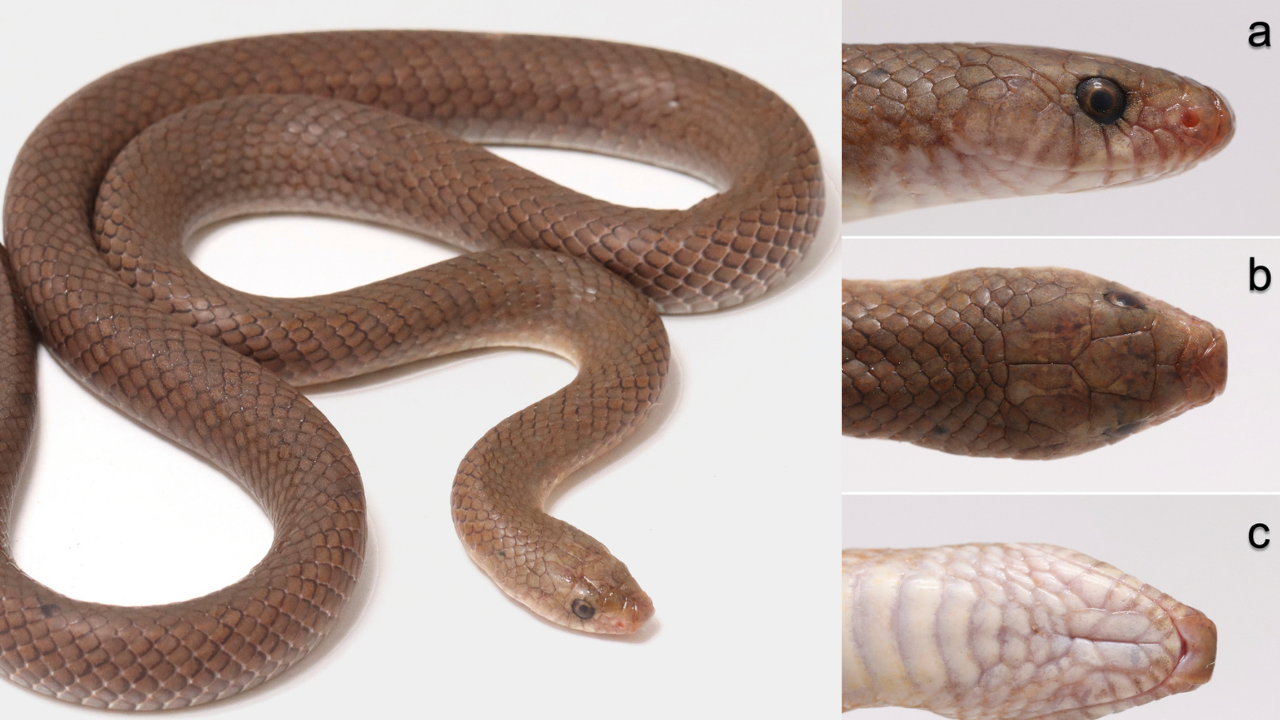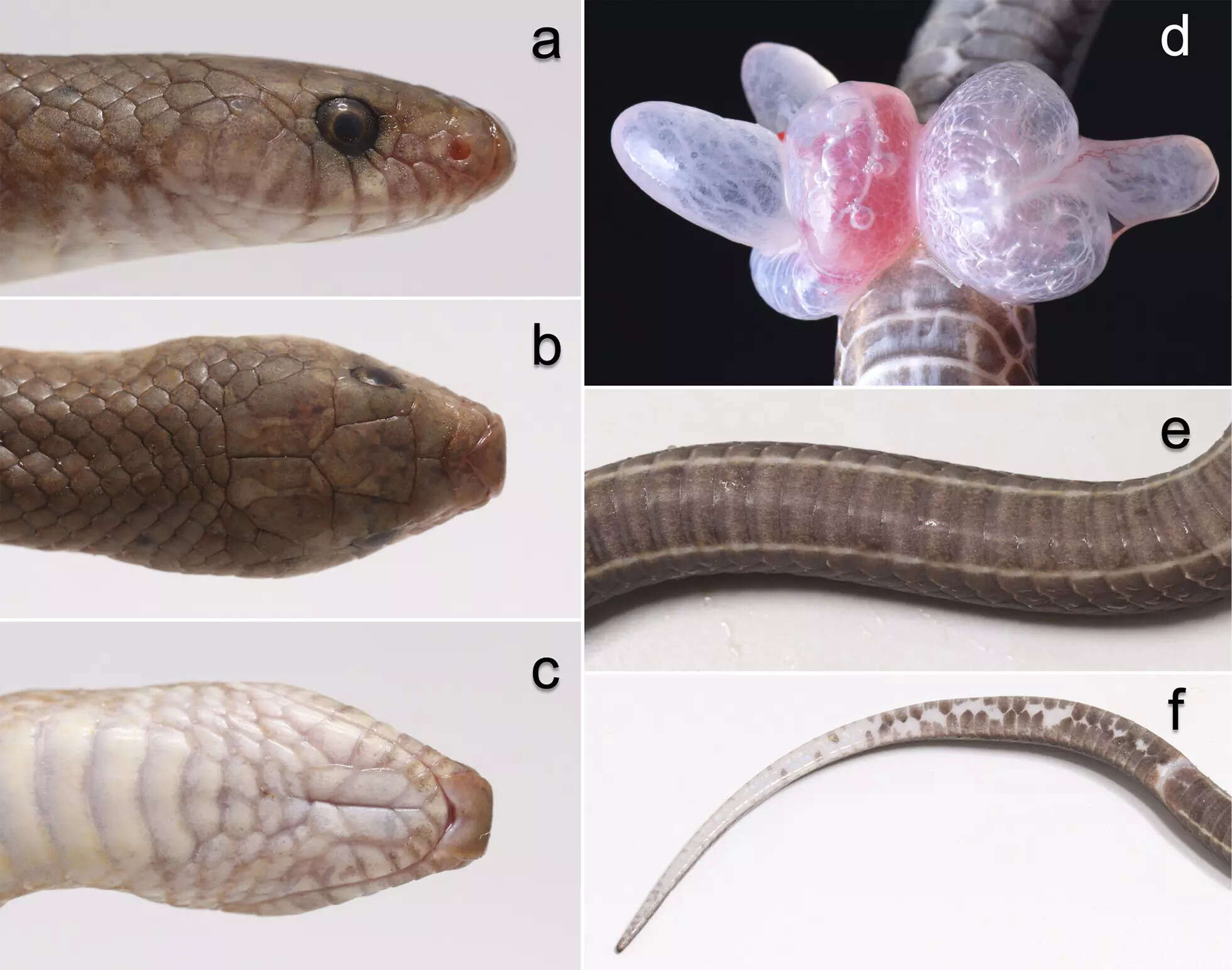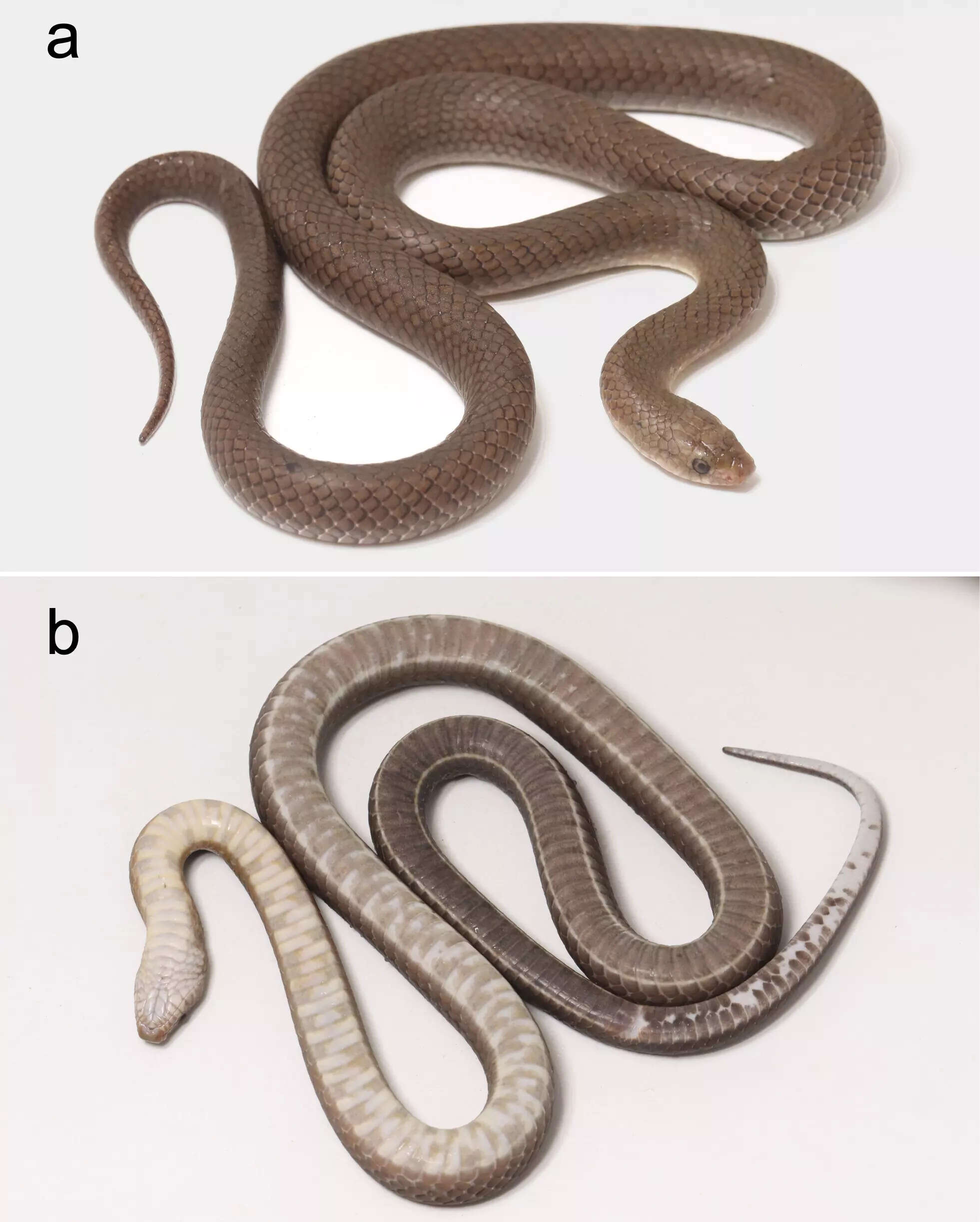Mysterious New Species Of Kukri Snake With Blade-Like Fangs Discovered in Southern Thailand| PHOTOS
Researchers have discovered a new species of kukri snake in the limestone karst formations of Satun and Trang Provinces in southern Thailand. The new species stands out from all other members of the genus due to a unique combination of morphological characteristics, per a study.

(Photo: Vertebrate Zoology)
Researchers have discovered a new species of kukri snake in the limestone karst formations of Satun and Trang Provinces in southern Thailand. The discovery was made following phylogenetic analyses based on three mitochondrial DNA fragments, according to a study published on Vertebrate Zoology in April.
Harry Ward-Smith, a budding herpetologist associated with Thailand's Sakaerat Conservation and Snake Education Team, revealed that a specimen, or 'paratype', of the newly discovered Cave Kukri Snake was spotted scaling a cliff face nearly 50 feet high.

During this discovery, Ward-Smith was accompanied by Rupert Grassby-Lewis from the wildlife tourism organization, Explore Herpetology. To gather samples of this new species, they undertook a challenging ascent equivalent to a five-story building, according to reports.
The new species stands out from all other members of the genus due to a unique combination of morphological characteristics, per the study. These include ventral scales numbering between 189 and 193 with distinct lateral keeling, 47 to 54 paired subcaudal scales, and anterior dorsal scale rows ranging from 17 to 19.
The reduction from 19 to 17 rows occurs above the 28th to 30th ventral scale when present. The snake also has eight blade-like and laterally compressed maxillary teeth.

In terms of coloration, the snake’s dorsum is olive-gray and plain, while the ventral surface is white anteriorly and dark gray posteriorly. The underside of its tail is dark gray, smeared with white.
The researchers briefly discussed the natural history and conservation status of this new species and provided observations of other kukri snakes inhabiting limestone karst habitats.
Trending:
End of Article
Subscribe to our daily Newsletter!
Related News





Election 'Stress Disorder' Will Leave You In Hospital, Literally: Study

3 Injured in St. Charles County After Chlorine Gas Leak At Water Treatment Plant

US Concerned About Putin, Kim's 'October Surprise' Before Elections: Report

Milwaukee's Shelf Cloud Headed To The Great Lakes: Will Tornado Warning Be Issued In Wisconsin City?

Who Were Davy and Natalie Lloyd? US Missionary Couple Killed In Gang Attack In Haiti









